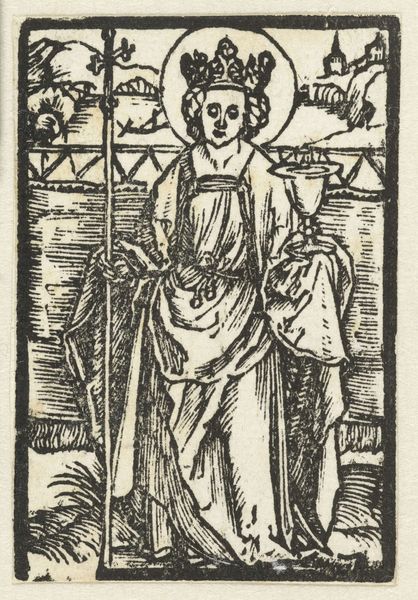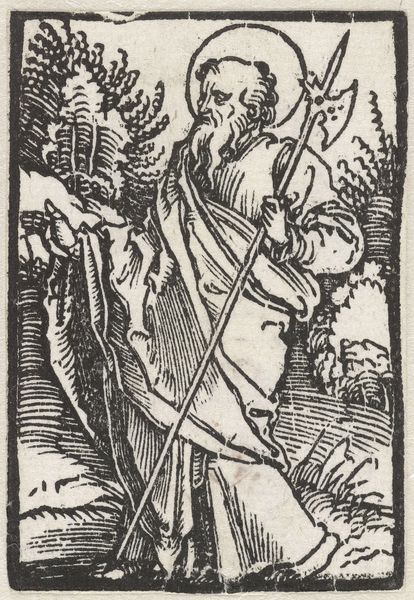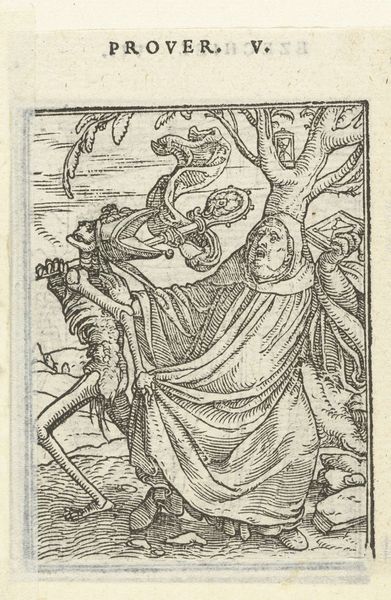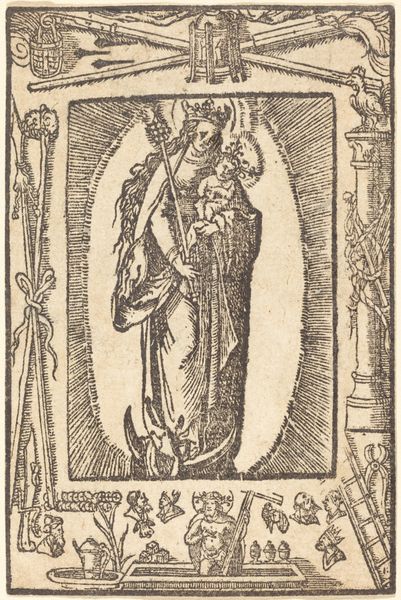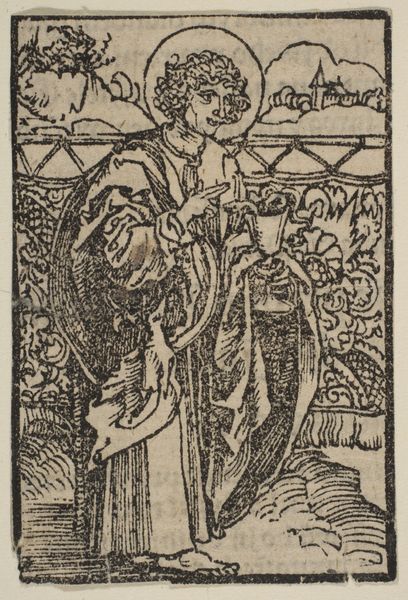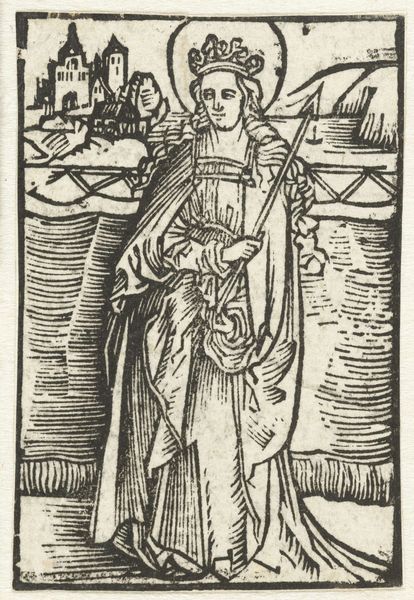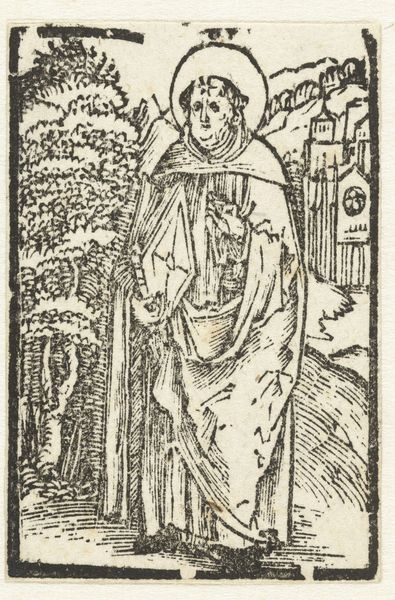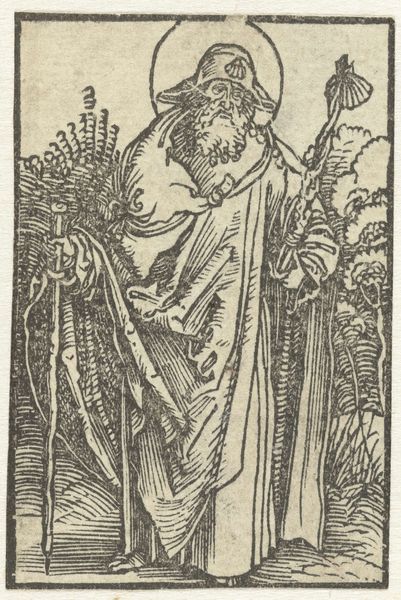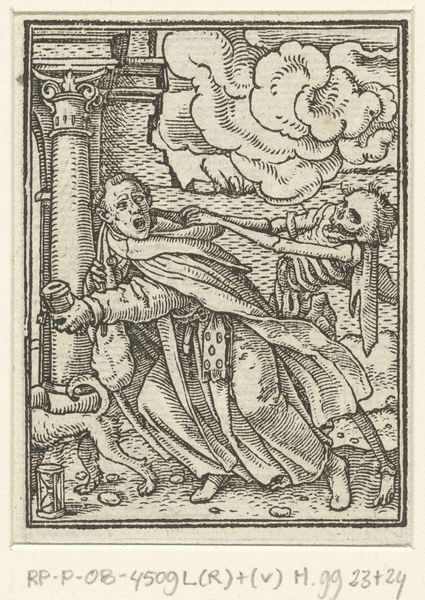
drawing, print, woodcut
#
drawing
# print
#
figuration
#
woodcut
#
history-painting
#
northern-renaissance
#
christ
Dimensions: height 62 mm, width 42 mm
Copyright: Rijks Museum: Open Domain
Curator: Dürer's "Opstanding", or "Resurrection" in English, created around 1503, is a powerful woodcut now held at the Rijksmuseum. What are your immediate thoughts on this piece? Editor: Stark. The black and white contrast really emphasizes the drama, almost like a stage play lit for maximum emotional impact. The heavy lines create a powerful, if somewhat brutal, visual texture. Curator: That starkness, typical of woodcuts, certainly adds to the feeling of immediate impact. Dürer wasn't just aiming for aesthetics here, though. The symbolism is rich, drawn from deep wells of religious tradition. Note the risen Christ holding the banner of the resurrection – a visual representation of triumph over death. Editor: The flag provides a dynamic diagonal counterpoint to the figure’s verticality, stabilizing what could easily be a much more frenetic scene. Semiotically, it reinforces this symbolic reading—a literal standard for this narrative of transcendence. Curator: Exactly. The sleeping soldiers below, utterly oblivious to the miracle unfolding before them, tap into a familiar archetype: the unseeing world blind to divine truth. It's a potent symbol of faith. It pulls on so many cultural narratives surrounding the story, a cultural meme almost. Editor: Interesting you mention the blindness of those guards. Dürer masterfully balances negative and positive space here. The tight composition forces the viewer's eye upwards, replicating the upward thrust inherent in the theme of resurrection. The density of blacks anchors the lower register, as the lighter Christ ascends...brilliantly engineered for a vertical reading. Curator: This print undoubtedly served as a devotional image, its symbolic weight resonating deeply within the Northern Renaissance audience. The imagery is purposefully impactful; resurrection is always the main concern! Editor: Yes, agreed. It’s clear that Dürer’s formal mastery, combined with this iconic iconography, has yielded a powerful piece. Its visual impact transcends mere skill – its formal strength reinforces its meaning in such a clear manner. Curator: Ultimately, "Resurrection" uses compelling symbols and masterful technique to visually deliver this essential religious message. Editor: A prime example of how formal qualities and culturally coded symbolism enhance an artwork’s resonancethrough both thoughtful technique and deeply felt context.
Comments
No comments
Be the first to comment and join the conversation on the ultimate creative platform.


